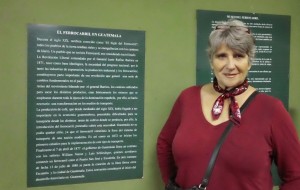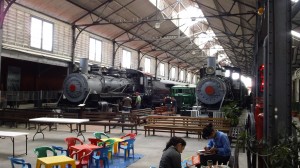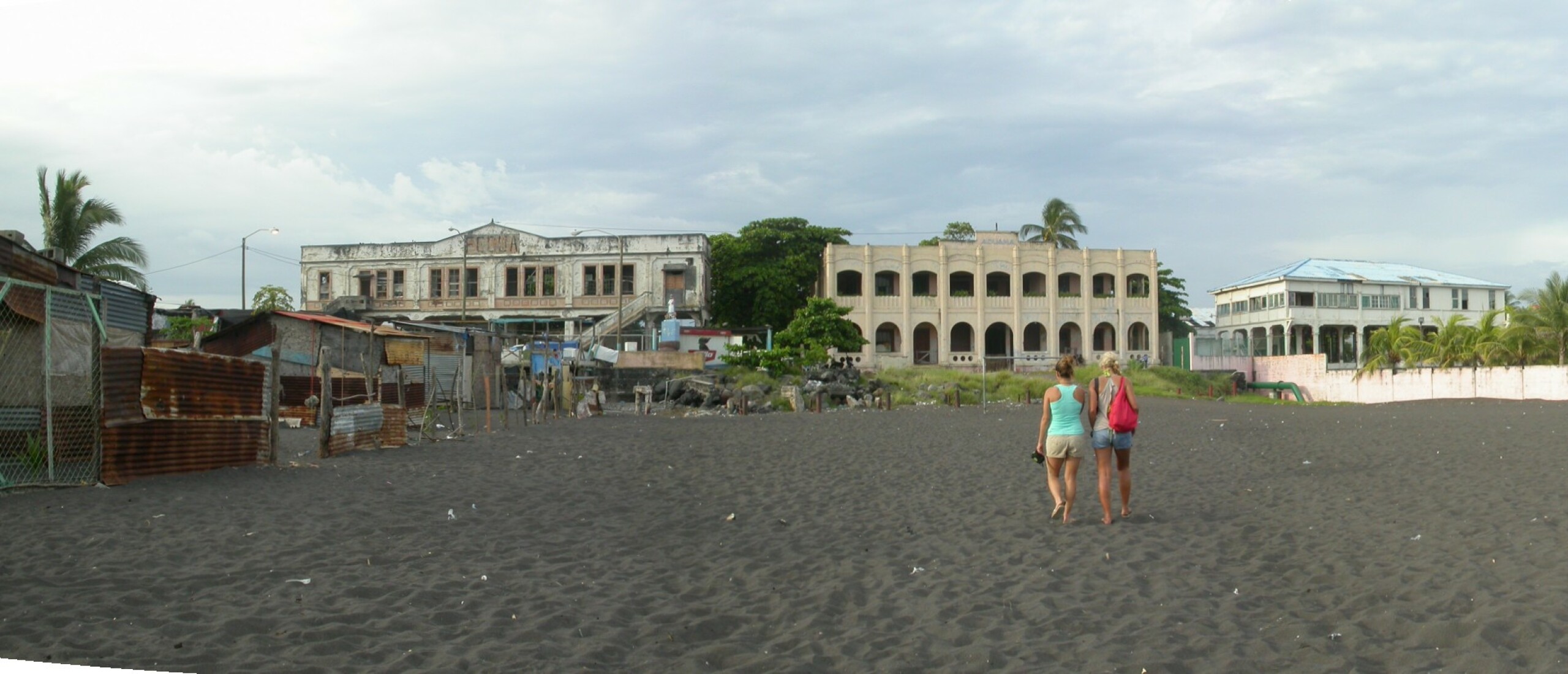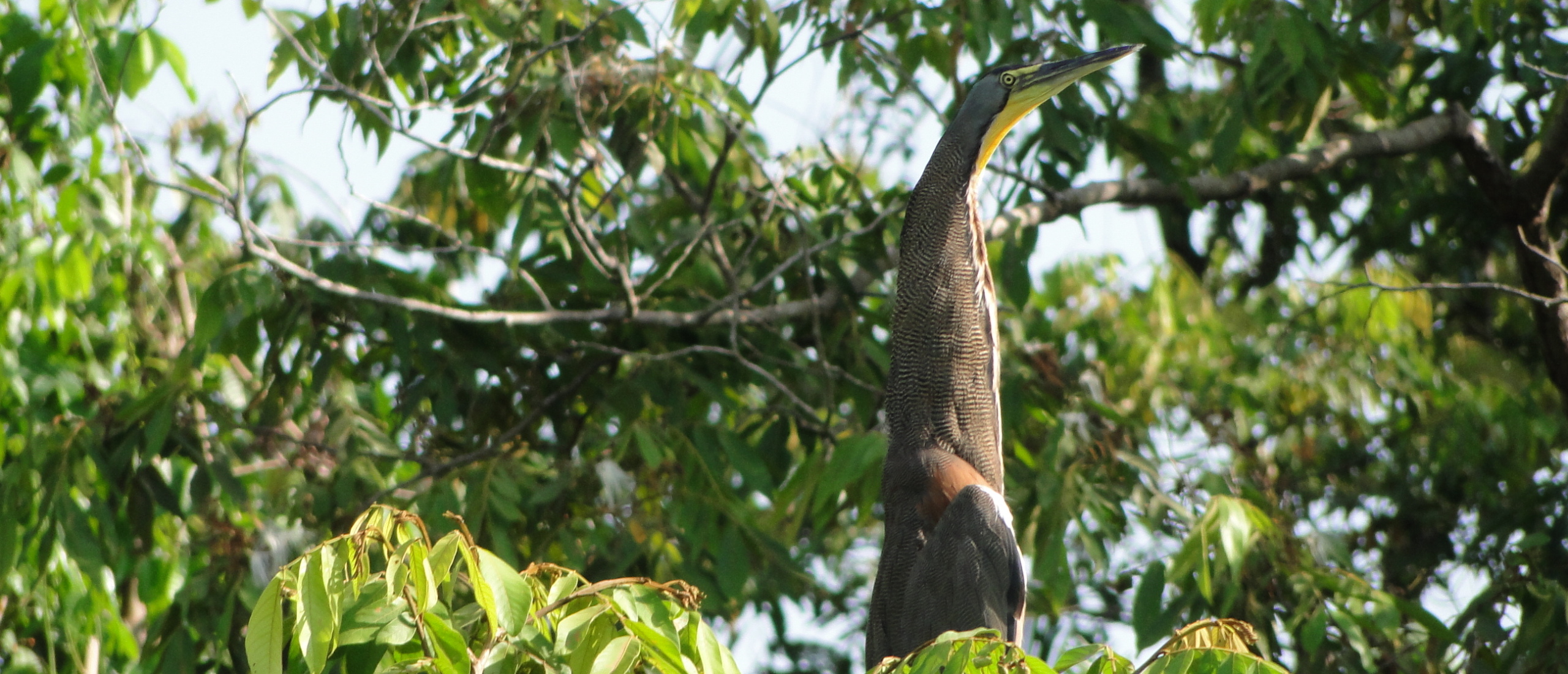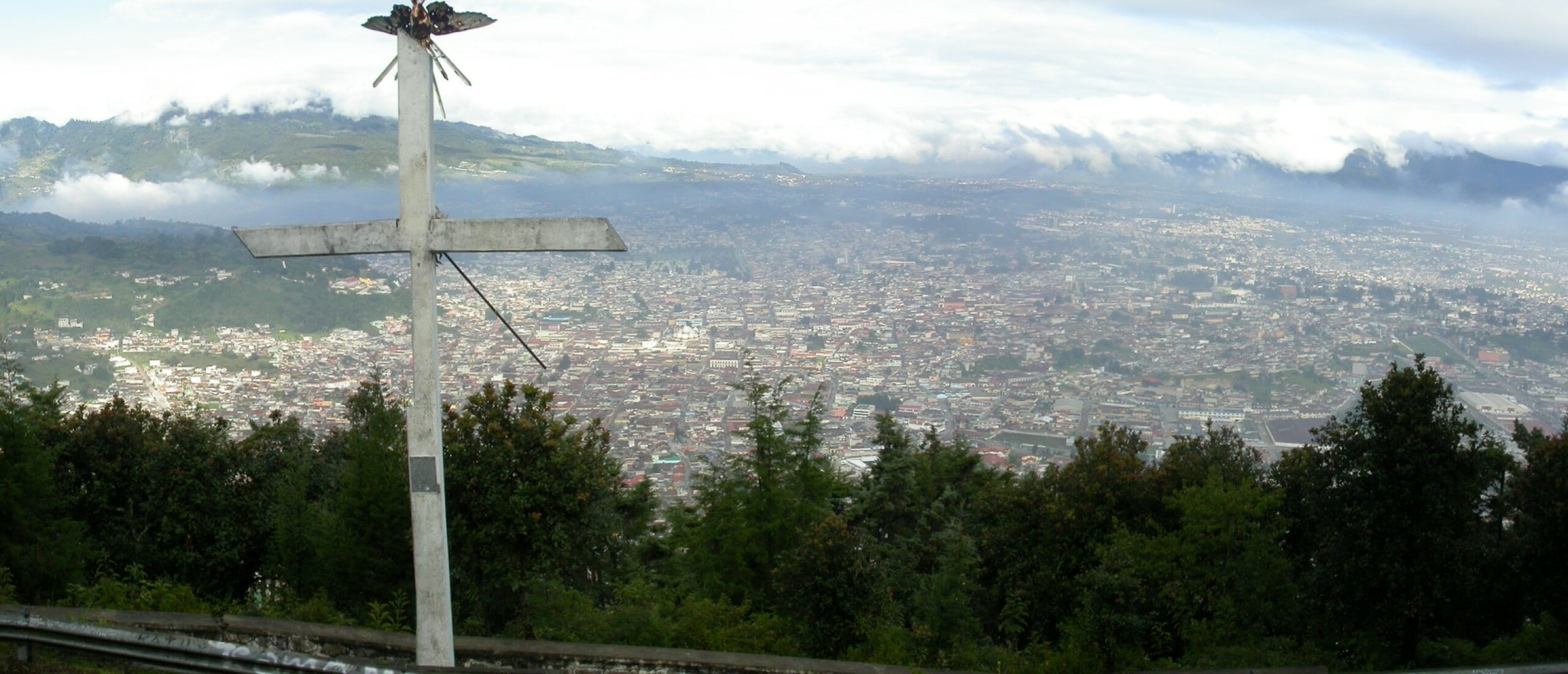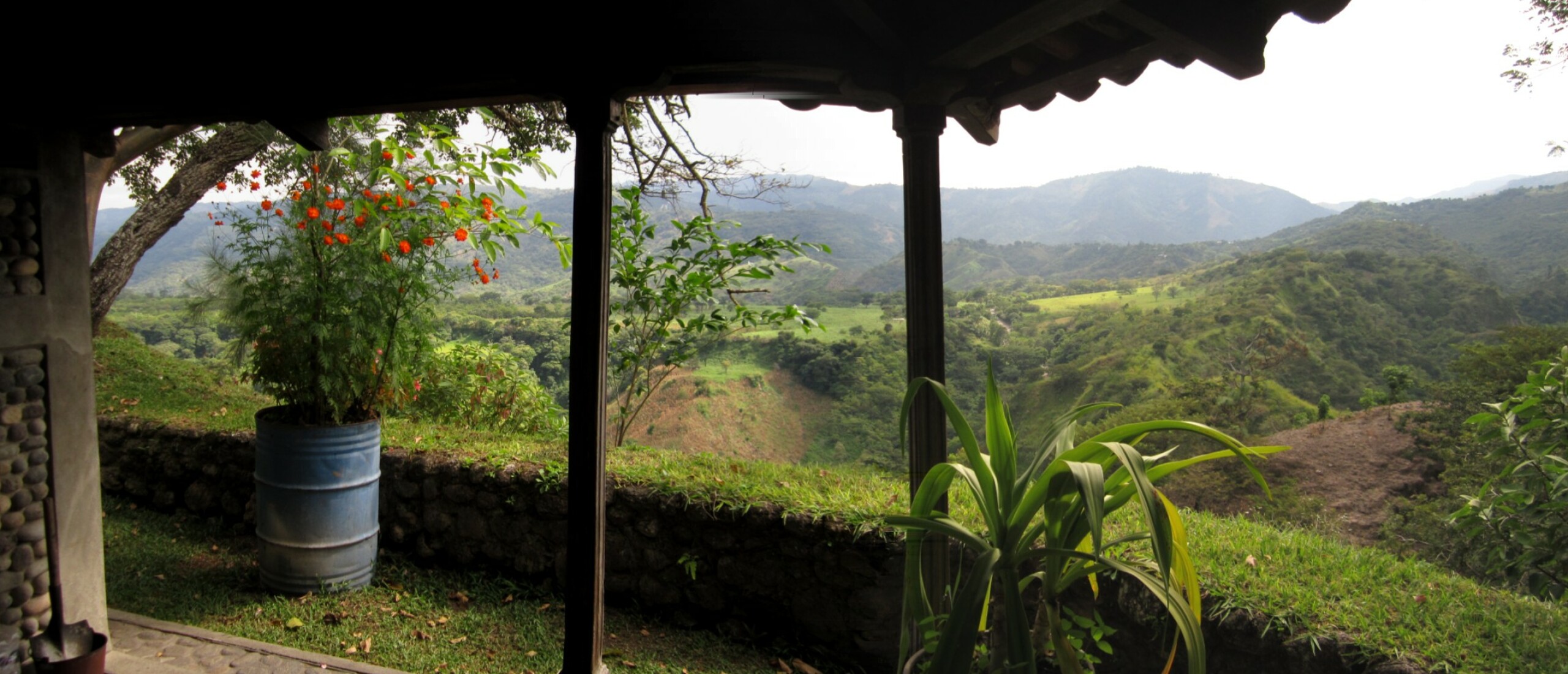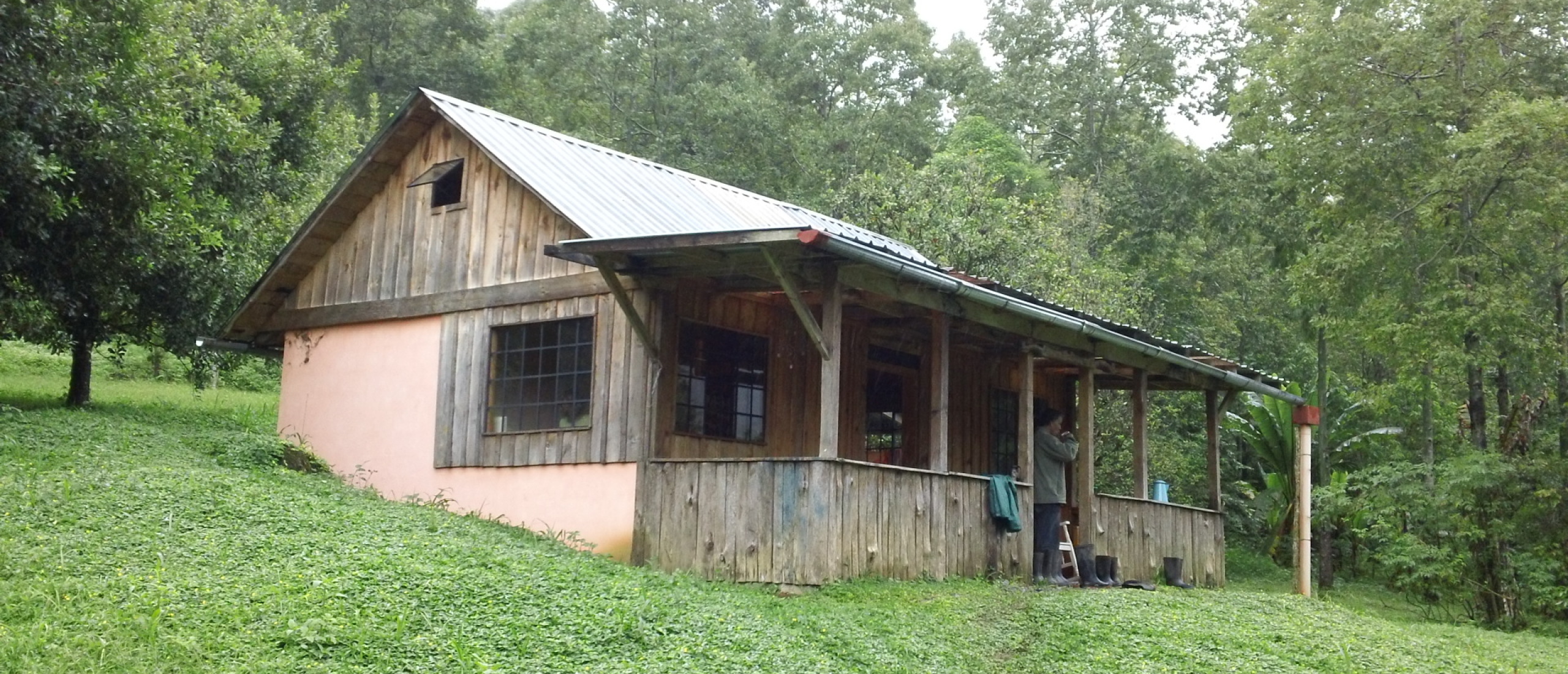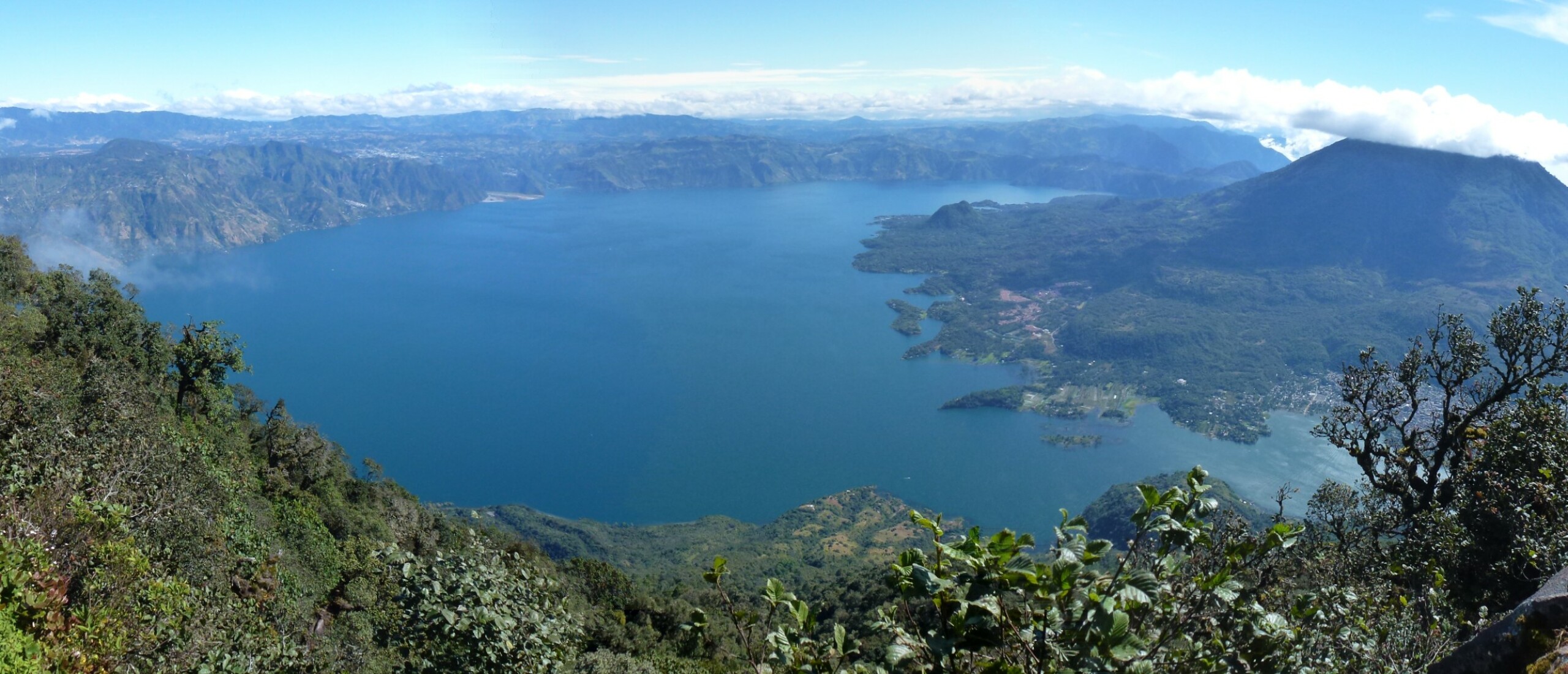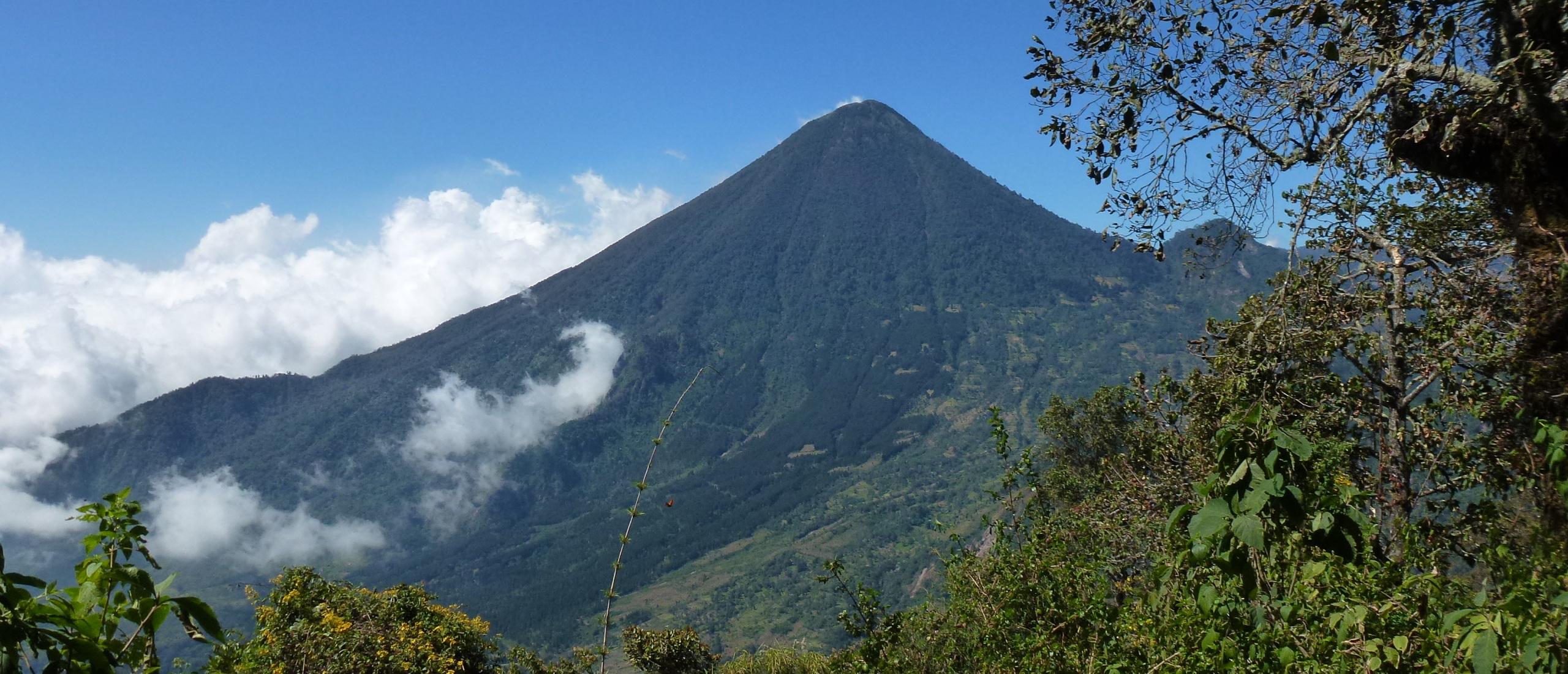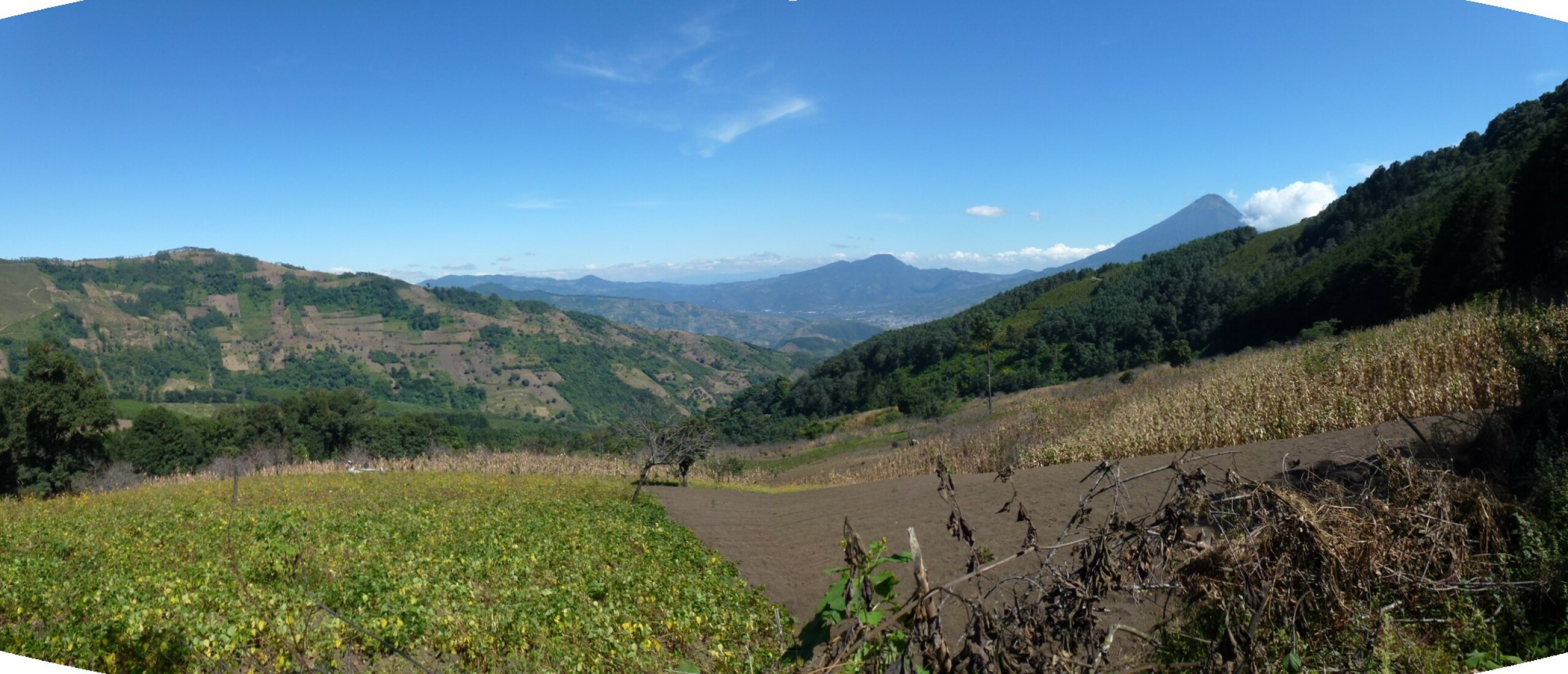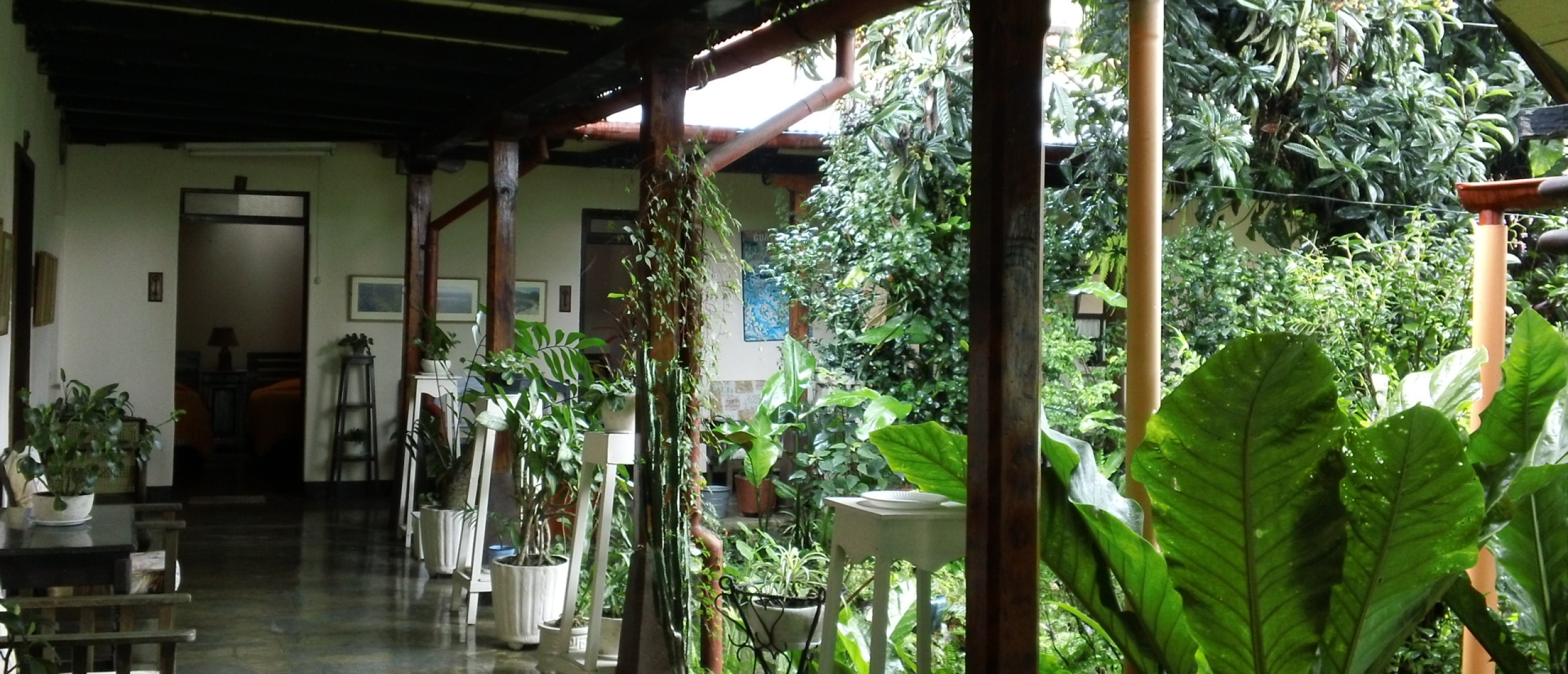
Guatemala City I arrived back in the capital on Tuesday, after quite an interesting journey from Cobán to Antigua the previous day. I was supposed to be picked up from the charming Pensión Monja Blanca in Cobán at 10.00, but at 10.45 there was still no sign of my “shuttle” – these shuttle buses in Guatemala are specifically designed for tourist travel, offering a door-to-door service between certain towns, thereby saving the hassle of traipsing across town to the regular bus stations with heavy luggage. They are of course more expensive than regular buses, but the convenience is well worth the extra cost – especially on that day as it was raining heavily (nothing unusual in Cobán!).
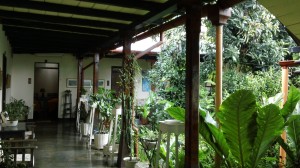 The charming Pension Monja Blanca in Coban, where I thought GCC might have stayed
The charming Pension Monja Blanca in Coban, where I thought GCC might have stayed
Finally my shuttle arrived at around 11.15, having apparently been delayed due to heavy rain on its way from Lanquín, and we were off. The driver told me that he might be picking up more passengers on the way – I was later to find out what that meant!! After a short while, he told me that we would drop by his home because he needed some medicine for stress. We duly parked outside his mother’s home in a pueblo outside Cobán, and he was gone for a while. Finally he emerged bearing some liquid medicine, which appeared to be chicken soup made by his mother, and we were on our way again. At first we chatted amicably, me telling him about my quest and my adventures, and him telling me that he spoke his native language, Poqomchi, with his mother, but with his children only Spanish. This I think is a great pity – being bilingual is a wonderful thing, and when a language dies, its culture goes with it. After a while he began to talk on his mobile phone (using hands-free, which I was pleased about), in Spanish, but in a very low voice, and he appeared to be negotiating about something. Later, as we were approaching a service station/restaurant called La Puerta de las Verapaces, he asked me if I needed to stop for lunch, to which I replied that I did not. He talked a bit more on the phone, and then announced that he did need to stop, and that we would stay for 15 minutes. He then spoke a bit more on the phone, and suddenly announced that he wanted to have the bus washed, which would take up to 45 minutes. He did indeed drink his mother’s soup, the bus was washed (although it did not look any cleaner afterwards!), and we were finally on our way again, but this time the driver was in much more of a hurry. We screeched into El Rancho, where the road from Cobán and the Verapaces meets the Carretera al Atlántico, coming up from the Caribbean coast. Here we stopped, and a very unsavoury-looking man got on. There was a lot of talk, a lot of waiting, and finally my driver hopped out, took my large rucksack out of the back, and climbed up onto the roof with it. I hopped out too, and saw that he was just attaching it with one of its own clips (not sufficiently strong), and he was neither covering it nor roping it on. I asked him what would happen if it rained, to which he replied that it doesn’t rain at this time of the year. As this is the height of the rainy season and it rains heavily EVERY afternoon, I was not impressed and told him to pass it down to me, and that it would remain with me, IN the bus. I then squeezed into the front seat with the rucksack and my other luggage crammed in between myself and the driver. And it did indeed rain heavily later in the day. Suddenly I realised what was happening. As the shuttle was empty apart from me, his negotiating had been to arrange to pick up a large number of extra passengers from El Rancho to Guatemala City in order to make some extra cash. Eventually the first batch of passengers arrived, and then we drove around the block again, and another lot appeared. Finally, with the bus jam packed full, and one man standing directly behind me clutching onto the grab handle above my head, and his elbow and smelly armpit right next to me, we were on our way. As I had planned to go out in Antigua that evening, I was anxious not to get there too late, and the original scheduled arrival time was 16.30. When it got to 16.00 and we had not even reached the outskirts of Guatemala City (45 kms from Antigua), this was clearly not going to be achieved…and then we plunged off the ring-road and headed into the centre of the capital instead, to drop off the passengers. At this point I registered my disapproval, and sure enough, we were then caught in the truly awful Guatemala City rush-hour traffic. However, to give my driver his due, we did finally make it to Antigua at 18.00. Although I can fully see his logic in using the empty bus to take extra passengers and make a little extra money on the side, I did not appreciate his lack of clarity with me (or the elbow and armpit of the man behind me), nor did I feel like paying the full rate for a shuttle. The company involved was called Aventuras turísticas – well named as it was certainly an aventura turística! On Tuesday morning I was kindly driven from Antigua to the capital by my super volcano-climbing and mountain-bike champion guide of two weeks previously, Luisa Zea, and we stopped on the way for a wonderful breakfast with her mother, and then I arrived back at the home of my very kind hosts, the Skaggs-Nanne family. Yesterday, after a very pleasant lunch at the German Club with my birding friend Anabelle, who had also invited French orchid enthusiast, photographer and tour guide Fred Muller, who it turns out is a personal friend of Jose Monzon, the entomologist who has seen my target butterfly Drucina championi alive (I cannot believe how everybody knows everybody here!), we headed into the old part of town with Guisela Nanne de Skaggs, my host here in the city, to the Museo del Ferrocarril, the railway museum.
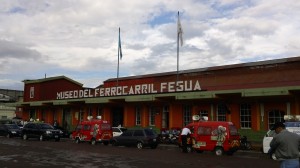 Museo del Ferrocarril, in the former main station of Guatemala City
Museo del Ferrocarril, in the former main station of Guatemala City
This was a fascinating visit, especially as it was Guisela’s great great grandfather, William Nanne, who had engineered the first railway from Puerto San Jose to Escuintla, which opened in 1880. We found pictures of her great great grandfather, grandfather and other family members on the walls, and marvelled also at the wonderful steam locomotives, old carriages and other railway memorabilia in this excellent museum, which is situated in the disused main Guatemala City station.
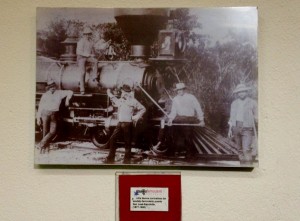 William Nanne, centre, with the other Nannes in front of one of the first locomotives
William Nanne, centre, with the other Nannes in front of one of the first locomotives
But, just as I had felt when visiting the old pier in Puerto San José, where my great grandfather arrived in Guatemala in 1879 and left from in 1881, why is that in three of the Latin American countries I have visited, Ecuador, Costa Rica and now Guatemala, the entire railway networks have fallen first into disrepair, and then finally collapsed altogether? The steep terrain with extremely unstable soil in all three countries, with frequent landslides washing away large sections of track, has certainly played its part, but gross mismanagement has, I fear, played an even greater role.
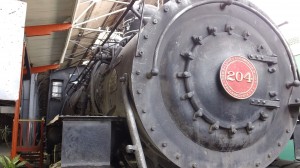 Detail of one of the locomotives, constructed by the Baldwyn Engineering Works, Philadelphia
Detail of one of the locomotives, constructed by the Baldwyn Engineering Works, Philadelphia


